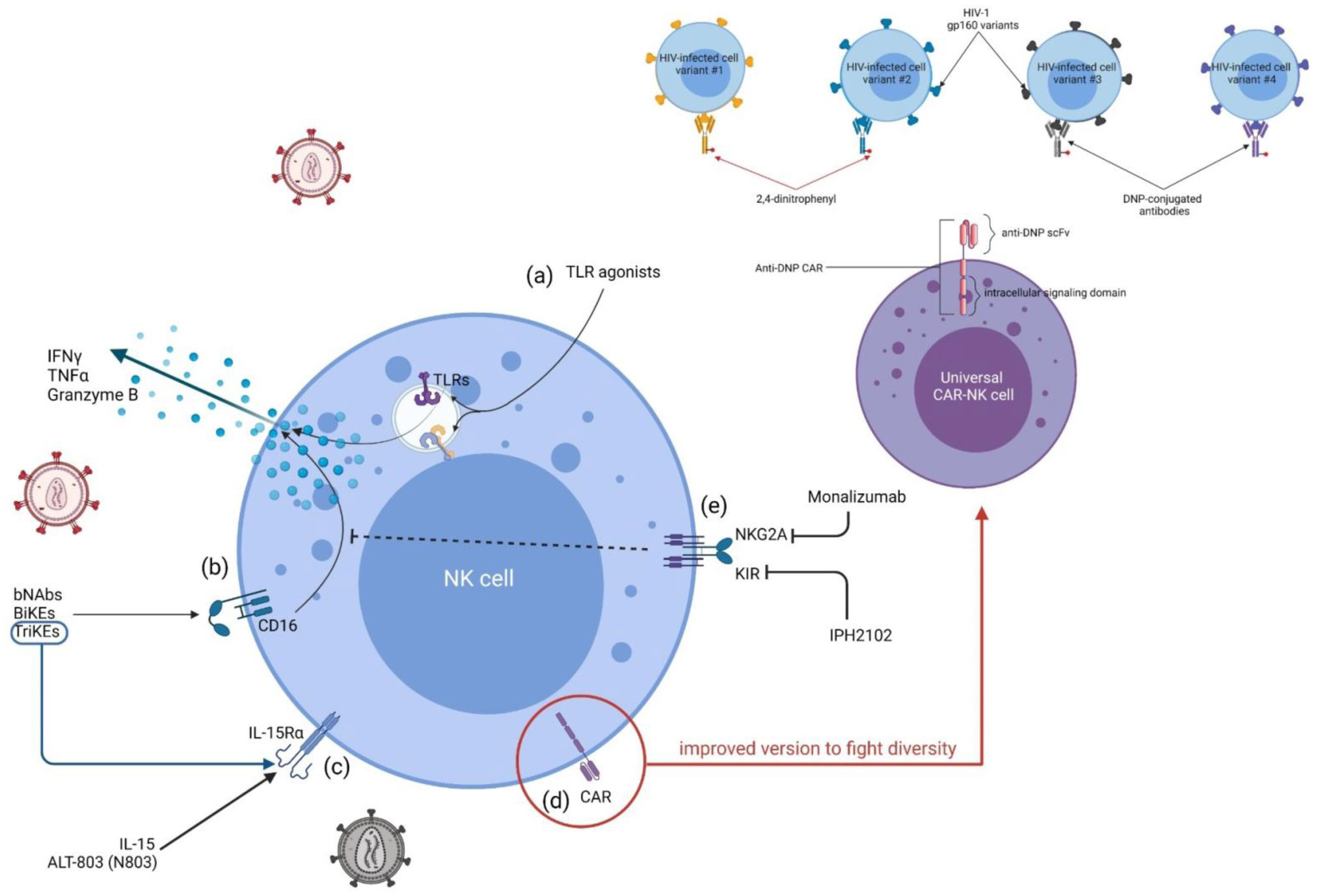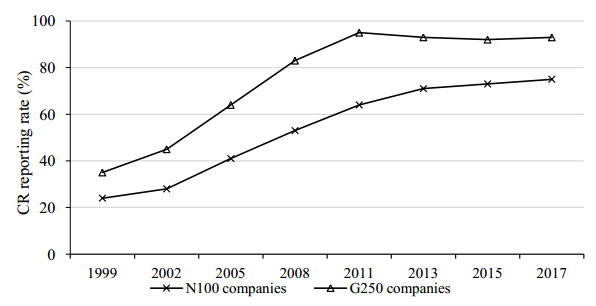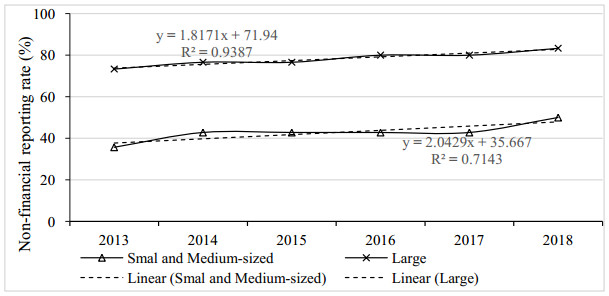This article analyzes the impact of mandatory disclosure of non-financial information in the financial statements of business corporations. The research method is regression and correlation analysis and statistical testing of hypotheses. The sample for empirical research is compiled from the accounting statements of all corporations traded on the Czech capital market in the period from 2013 to 2018 and contain 264 reports. The results of the research confirmed the growing trend of publishing non-financial information and at the same time a significant share of large corporations compared to small and medium-sized enterprises (SMEs). The positive result of the research testifies about the following of global trends in the reporting of non-financial information by corporations on the Czech capital market, but despite the efforts of regulators, significant differences in the quantity and quality of reports were confirmed.
Citation: Jaroslav Sedláček, Veronika Popelková. Non-financial information and their reporting—evidence of small and medium-sized enterprises and large corporations on the Czech capital market[J]. National Accounting Review, 2020, 2(2): 204-216. doi: 10.3934/NAR.2020012
Related Papers:
| [1] |
Kochar Khasro Saleh, Semih Dalkiliç, Lütfiye Kadioğlu Dalkiliç, Bahra Radhaa Hamarashid, Sevda Kirbağ .
Targeting cancer cells: from historic methods to modern chimeric antigen receptor (CAR) T-Cell strategies. AIMS Allergy and Immunology, 2020, 4(2): 32-49.
doi: 10.3934/Allergy.2020004
|
| [2] |
Stefano Regis, Fabio Caliendo, Alessandra Dondero, Francesca Bellora, Beatrice Casu, Cristina Bottino, Roberta Castriconi .
Main NK cell receptors and their ligands: regulation by microRNAs. AIMS Allergy and Immunology, 2018, 2(2): 98-112.
doi: 10.3934/Allergy.2018.2.98
|
| [3] |
Caterina Marangio, Rosa Molfetta, Erisa Putro, Alessia Carnevale, Rossella Paolini .
Exploring the dynamic of NKG2D/NKG2DL axis: A central regulator of NK cell functions. AIMS Allergy and Immunology, 2025, 9(2): 70-88.
doi: 10.3934/Allergy.2025005
|
| [4] |
Rosa Molfetta, Beatrice Zitti, Angela Santoni, Rossella Paolini .
Ubiquitin and ubiquitin-like modifiers modulate NK cell-mediated recognition and killing of damaged cells. AIMS Allergy and Immunology, 2017, 1(4): 164-180.
doi: 10.3934/Allergy.2017.4.164
|
| [5] |
Daniel Amsterdam .
Unique natural and adaptive response mechanisms to control and eradicate HIV infection. AIMS Allergy and Immunology, 2018, 2(3): 113-125.
doi: 10.3934/Allergy.2018.3.113
|
| [6] |
Mujibullah Sheikh, Pranita S. Jirvankar .
Innovative immunotherapeutic strategies for gastric cancer: A comprehensive review. AIMS Allergy and Immunology, 2025, 9(1): 27-55.
doi: 10.3934/Allergy.2025003
|
| [7] |
Mansur Aliyu, Fatema Zohora, Ali Akbar Saboor-Yaraghi .
Spleen in innate and adaptive immunity regulation. AIMS Allergy and Immunology, 2021, 5(1): 1-17.
doi: 10.3934/Allergy.2021001
|
| [8] |
Mansur Aliyu, Ali Akbar Saboor-Yaraghi, Sadegh Khodavaisy, Behrouz Robat-Jazi, Muhammad Ibrahim Getso .
Glucuronoxylomannan: the salient polysaccharide in cryptococcal immunity. AIMS Allergy and Immunology, 2022, 6(2): 71-89.
doi: 10.3934/Allergy.2022008
|
| [9] |
Holly E Perry, Ivan Ryzhov, Oxana Galanina, Nicolai V Bovin, Stephen M Henry .
Incidence in plasma of low level antibodies against three xenotransplantation and immunotherapeutic glycan antigens. AIMS Allergy and Immunology, 2020, 4(4): 75-87.
doi: 10.3934/Allergy.2020007
|
| [10] |
Darrell O. Ricke .
Antibodies and infected monocytes and macrophages in COVID-19 patients. AIMS Allergy and Immunology, 2022, 6(2): 64-70.
doi: 10.3934/Allergy.2022007
|
Abstract
This article analyzes the impact of mandatory disclosure of non-financial information in the financial statements of business corporations. The research method is regression and correlation analysis and statistical testing of hypotheses. The sample for empirical research is compiled from the accounting statements of all corporations traded on the Czech capital market in the period from 2013 to 2018 and contain 264 reports. The results of the research confirmed the growing trend of publishing non-financial information and at the same time a significant share of large corporations compared to small and medium-sized enterprises (SMEs). The positive result of the research testifies about the following of global trends in the reporting of non-financial information by corporations on the Czech capital market, but despite the efforts of regulators, significant differences in the quantity and quality of reports were confirmed.
Despite decades of research, no drug has so far been fully effective against HIV. Although currently available antiretroviral therapy (ART) can effectively suppress HIV replication by acting at different levels of the HIV life cycle, it does not completely eradicate infected cells but instead converts them into latent viral reservoirs which upon non-adherence to treatment leads to viral rebound. Moreover, ART presents many challenges in terms of long-term drug toxicities and side effects [1]. It has therefore become crucial to seek novel ways of approaching HIV cure. Immunotherapy seems to have paved the way for this. Importantly, NK cell-based immunotherapy has gained ground in cancer treatment with promising results [2]. NK cells are well known for their anti-tumor and antiviral activity, and they do not require prior antigenic stimuation for activation [3]. Therefore, NK-based immunotherapies against HIV are currently under consideration and are being tested in clinical trials. Some of those include CAR-NK cell therapy, toll-like receptor (TLR) agonists, broadly neutralizing Abs (bNAbs), bi- and tri-specific killer engagers (BiKEs & TriKEs), facilitating antibody-dependent cellular cytotoxicity (ADCC), blocking inhibitory NK receptors during infection, IL-15 and IL-15 superagonists (eg: ALT-803), etc. [4] (Figure 1).
A major cause of frustration and a fact that is immensely challenging in HIV drug development attempts is overcoming HIV diversity. In fact, previous studies on multi-specific bNAbs have shown that focusing on two or three epitopes are inadequate to cover all HIV-1 variants. However, we recently came across an interesting article by Lim et al. where they have introduced for the first time in history, a universal CAR-NK cell approach providing an effective solution to counteract this HIV variability [5]. In contrast to currently available CARs which target a single epitope of HIV envelope glycoprotein gp160 (a complex between gp120 and gp41) and thus have failed to address this issue, the universal CAR model developed by Lim et al. indirectly targets different gp160 epitope variants. Their CAR-NK cell has been designed to recognize 2,4-dinitrophenyl (2,4-DNP) tagged to gp160 specific Abs, given that anti-gp160 Abs with different specificities are readily available. See Figure 1d [5]. This kind of approach has several potential advantages. Firstly, it is compatible with all types of Abs including those which are not effective in inducing ADCC. Also, it has higher specificity and can be considered safer as ADCC will not be induced by naturally produced serum Abs. Furthermore, they do not impair the primary NK cell response against gp160+ HIV-infected cells [5] As a solution to the competition exerted by natural anti-2,4-DNP Abs that exist in minor proportions in serum (≈1%), Lim et al. have suggested increasing the affinity of their universal CAR for DNP [6]. Compared to the use of T cell-based approaches, allogeneic NK cells are a better alternative since it is linked to a lower risk of inducing GvHD [7]. Their approach will be further evaluated through mouse models in future studies.
Thus, we conclude that in order to tackle the tremendous diversity of HIV epitopes similar cost-effective and flexible universal strategies will be necessary. Furthermore, under the current situation, this approach alone will not be sufficient since the latent HIV reservoir will have to be reactivated and thus combination therapy with LRAs (latency reversing agents) and possibly other agents such as antiretroviral combinations seem essential as under pressure HIV is known to generate escape mutants or lead to selection [8],[9].
References
|
[1]
|
Aguilar FJ (1967) Scanning the Business Environment, New York: Macmillan.
|
|
[2]
|
Avrampou A, Skouloudis A, Iliopoulos G, et al. (2019) Advancing the Sustainable Development Goals: Evidence from leading European banks. Sust Dev 27: 743-757.
|
|
[3]
|
Bohušová H (2011) General Approach to the IFRS and US GAAP Convergence. Acta Univ Agric Silvic Mendelianae Brun 54: 27-36.
|
|
[4]
|
Darnall N, Henriques I, Sadorsky P (2010) Adopting proactive environmental strategy: the influence of stakeholders and firm size. J Manage Stud 47: 1072-1094. doi: 10.1111/j.1467-6486.2009.00873.x

|
|
[5]
|
Deegan CM (2014) Financial accounting theory, Sydney: McGraw-Hill Education Pty, Ltd.
|
|
[6]
|
Deloitte (2018) Global Human Capital Trends 2018. Available from: https://www2.deloitte.com/au/en/pages/human-capital/articles/human-capital-trends.html.
|
|
[7]
|
Engert S, Baumgarter RJ (2016) Corporate sustainability strategy-bridging the gap between formulation and implementation. J Clean Prod 113: 822-834. doi: 10.1016/j.jclepro.2015.11.094

|
|
[8]
|
Evangelinos KI, Skouloudis A (2014) European perspectives on corporate non-financial disclosure: Evidence from the Southeast. Int J Discl Governance 11: 33-53. doi: 10.1057/jdg.2012.13

|
|
[9]
|
EY (2016) The Road to Reliable Non-Financial Reporting. Available from: https://www.slideshare.net/turloughguerin/eys-report-the-road-to-reliable-nonfinancial-reporting-2016.
|
|
[10]
|
Gonzalez-Ramos MI, Donate MJ, Guadamillas F (2018) The Effect of Technological Posture and Corporate Social Responsibility on Financial Performance Through Corporate Reputation. Int J Innovation 6: 164-179. doi: 10.5585/iji.v6i2.244

|
|
[11]
|
Halkos G, Skouloudis A (2016) National CSR and institutional conditions: An exploratory study. J Clean Prod 139: 1150-1156. doi: 10.1016/j.jclepro.2016.07.047

|
|
[12]
|
Hasprová O, Brabec Z (2014) The Importance of Intangible Assets in a Company Engaged in the Development of Advanced Technologies. Proceedings of the SGEM International Multidisciplinary Scientific Conferences on Social Sciences and Arts SGEM 2014, II: 769-776.
|
|
[13]
|
Ioannou I, Serafeim G (2011) The Consequences of Mandatory Corporate Sustainability Reporting. HBS Working Paper Series, 11-100.
|
|
[14]
|
Myšková R, Hájek P (2019). Relationship between corporate social responsibility in corporate annual reports and financial performance of the US companies. J Int Stud 12: 269-282. doi: 10.14254/2071-8330.2019/12-1/18

|
|
[15]
|
Kaplan RS, Norton DP (1996) The Balanced Scorecard: Translating Strategy into Action, Boston: Harvard Business Publishing.
|
|
[16]
|
Kašparová K, Škapa R (2008) Insight into Corporate Social Responsibility practices of Czech companies. J Global Strat Manage 2: 47-57. doi: 10.20460/JGSM.2008218486

|
|
[17]
|
KPMG (2017) The road ahead. Available from: https://assets.kpmg/content/dam/kpmg/xx/pdf/2017/10/kpmg-survey-of-corporate-responsibility-reportin.
|
|
[18]
|
Marrewijk M (2003) Concepts and Definitions of CSR and Corporate Sustainability: Between Agency and Communion. J Bus Ethics 44: 95-105. doi: 10.1023/A:1023331212247

|
|
[19]
|
Peters JP, Waterman RH (2004) In search of excellence, New York: HarperCollins Publishers, Inc.
|
|
[20]
|
Popelková V, Sedláček J (2019) Implementation of the European Directive on Non-financial Information in the European Economic Area. Proceedings of the 16th International Scientific Conference European Financial Systems 2019. Brno: Masaryk University Press, 2019, 443-451.
|
|
[21]
|
Porter ME (2008) The Five Competitive Forces that Shape Strategy. Harv Bus Rev 88: 78-93.
|
|
[22]
|
Porter ME, Kramer MR (2006) Strategy and society: The link between competitive advantage and corporate social responsibility. Harv Bus Rev 84: 76-92.
|
|
[23]
|
Sedláček J (1999) Účetní data v rukou manažera-finanční analýza v řízení firmy, Brno: Computer Press.
|
|
[24]
|
Standard Ethics (2019) SE Rating. Available from: http://www.standardethics.eu/company/esg-model.html.
|
|
[25]
|
United Nations 70/1 (2015). Transforming our world: the 2030 Agenda for Sustainable Development. Available from: https://www.un.org/ga/search/view_doc.asp?symbol=A/RES/70/1&Lang=E.
|
|
[26]
|
Waddock SA, Bodwell Ch, Graves SB (2002) Responsibility: The new business imperative. Acad Manage Perspect 16: 132-148.
|
|
[27]
|
Wang H, Choi JA (2010) New Look at the Corporate Social-Financial Performance Relationship: The Moderating Roles of Temporal and Interdomain Consistency in Corporate Social Performance. J Manage 39: 416-441.
|
|
[28]
|
WCED-World Commission on Environment and Development (1983) Our Common Future. Available from: https://sustainabledevelopment.un.org/content/documents/5987our-common-future.pdf
|
|
[29]
|
Wolf J (2014) The relationship between sustainable supply chain management, stakeholder pressure, and corporate sustainability performance. J Bus Ethics 119: 317-328. doi: 10.1007/s10551-012-1603-0

|










 DownLoad:
DownLoad:





